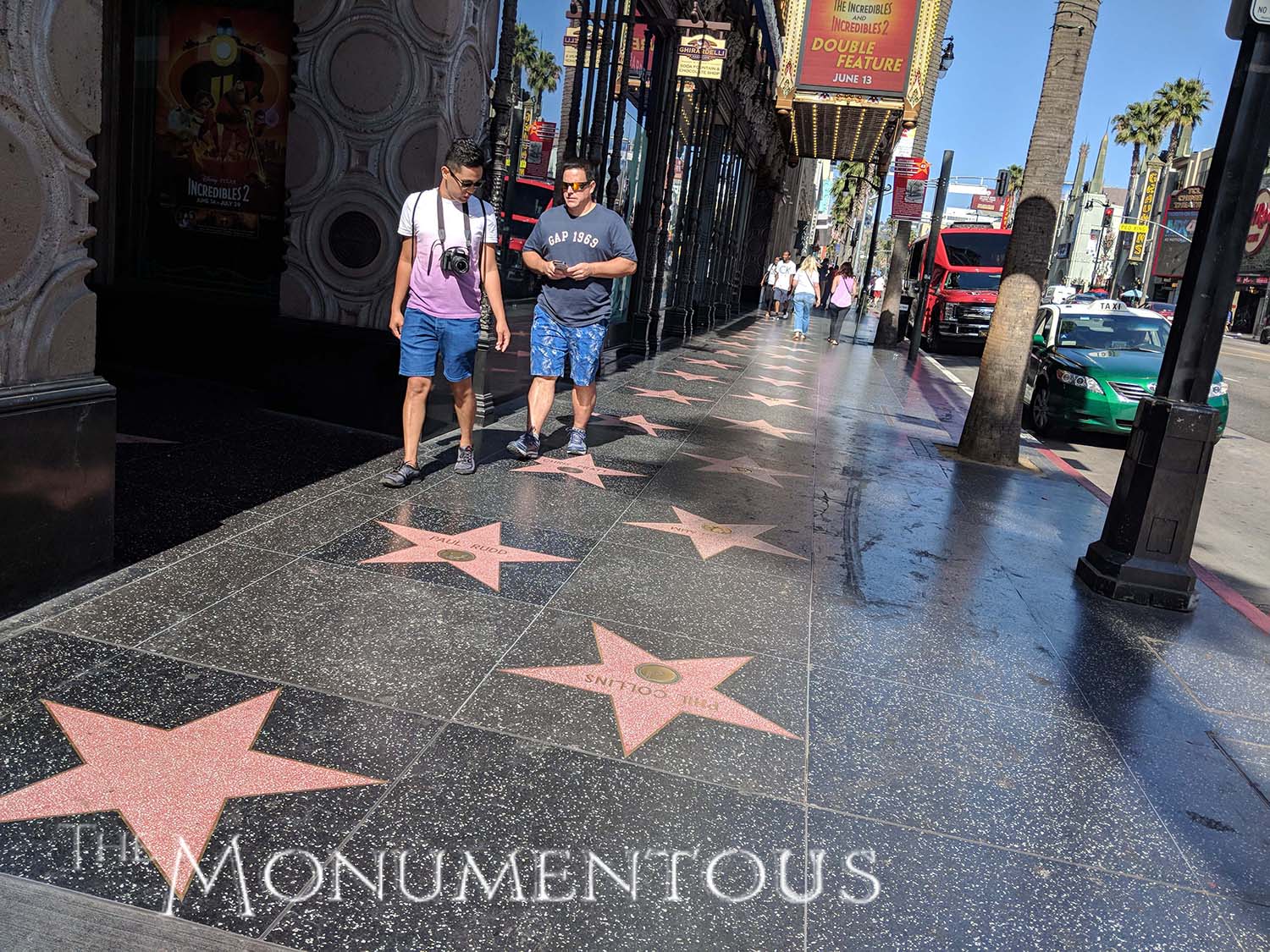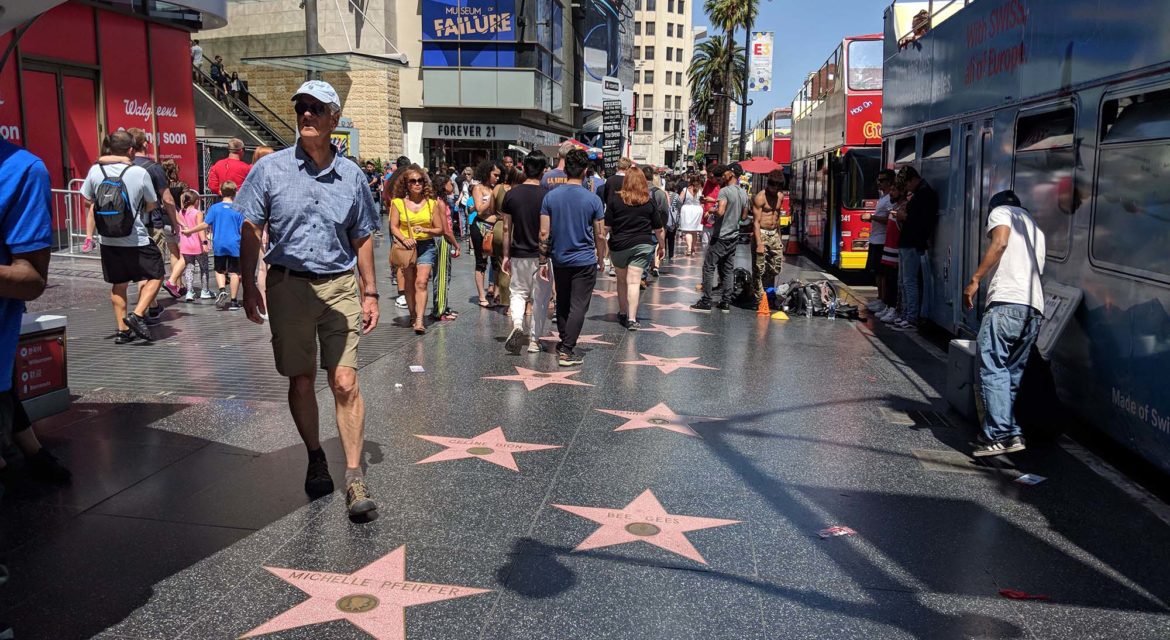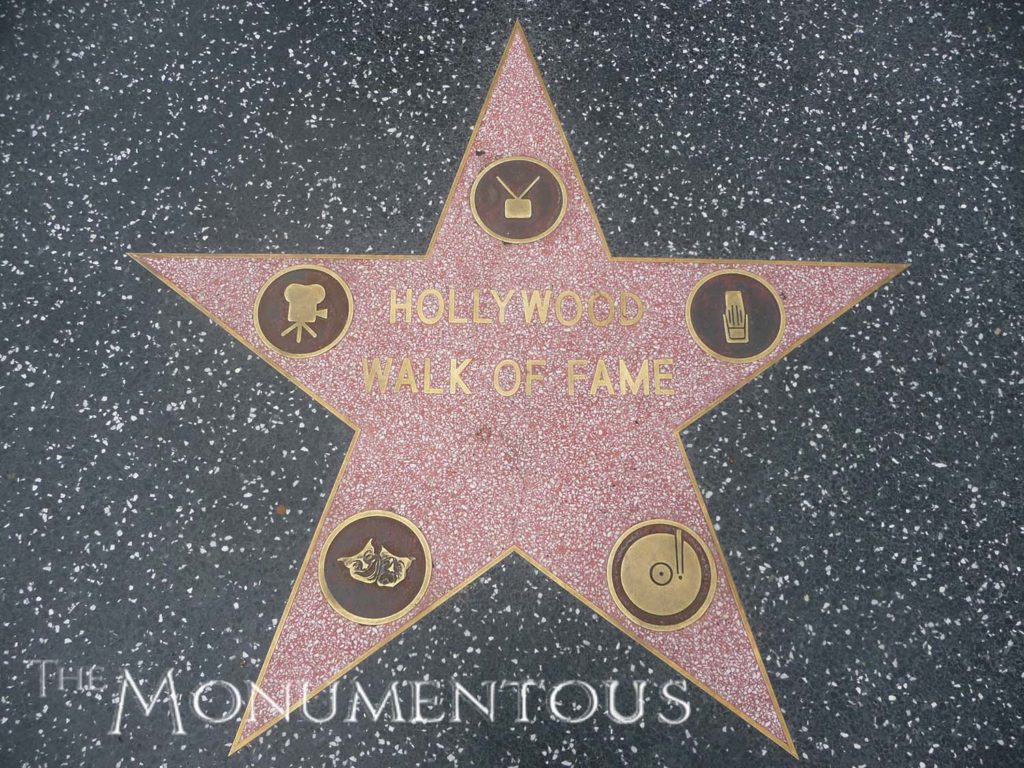 Cities and communities across the world have created attractions that are designed to do everything from generate publicity to stimulate the local economy. Examples like “I Amsterdam” showcase what it can mean to change the perception of an entire city, but the Hollywood Walk of Fame represents an attraction that has been able to resonate with a city and culture in an especially profound way.
Cities and communities across the world have created attractions that are designed to do everything from generate publicity to stimulate the local economy. Examples like “I Amsterdam” showcase what it can mean to change the perception of an entire city, but the Hollywood Walk of Fame represents an attraction that has been able to resonate with a city and culture in an especially profound way.
The Hollywood Walk of Fame uniquely celebrates the people and ambitions that have driven the entertainment industry and popular culture as a whole. Audiences can interact with the permanent public monuments on the Walk in a variety of ways, and doing so is just one of the experiences available to them. However, that’s just part of the reason why the Walk of Fame has become a destination with a legacy that can be seen and appreciated across the world.

Celebrating the Names that Create Glamour and Excitement
The man credited with the idea for creating a Walk of Fame was E. M. Stuart, who in 1953 served as the volunteer president of the Hollywood Chamber of Commerce. His idea was to create something that would “maintain the glory of a community whose name means glamour and excitement in the four corners of the world.” After a series of ideas and proposals, the concept of honoring selectees with their name on a star was chosen. Committees were established to represent the four different aspects – motion picture, television, recording and radio – of the entertainment industry at that time.
 On August 15, 1958, the Chamber and City unveiled eight stars on Hollywood Blvd. at Highland Avenue to create excitement and to demonstrate what the Walk would look like. There was no “first” recipient since the original stars were installed as a continuous project, with no individual ceremonies. On February 8, 1960, construction began on the rest of the Walk, and the Hollywood Chamber of Commerce came up with criteria around how new names would be chosen to be added.
On August 15, 1958, the Chamber and City unveiled eight stars on Hollywood Blvd. at Highland Avenue to create excitement and to demonstrate what the Walk would look like. There was no “first” recipient since the original stars were installed as a continuous project, with no individual ceremonies. On February 8, 1960, construction began on the rest of the Walk, and the Hollywood Chamber of Commerce came up with criteria around how new names would be chosen to be added.
In 1978, the Cultural Heritage Board of the City of Los Angeles designated the Hollywood Walk of Fame as a Los Angeles Historic-Cultural Monument, but a period of decay had caused the Walk to fall into disrepair. Despite that reality, Johnny Grant was able to attract a great deal of publicity due to the ceremony he initiated for the installation of his star in 1980. It compelled the Walk of Fame Committee to ask him to chair the committee. As chairman, he was able to make notable changes to the walk that includes adding the “Live Theatre” category to the original four as well as creating a second row of alternating stars on the sidewalk to accommodate far more than the 2,518 stars originally intended. Today, an average of two stars are added to the Walk on a monthly basis.
The addition of these stars makes it so that no matter how many times someone visits the Walk of Fame, there will always be a reason to come back since it’s always changing. These new stars are just part of what makes the Walk such a distinct experience though.
Something to See in Every Direction
 Well over 2,500 stars run up and down both sides of Hollywood Blvd between La Brea Ave. and Gower Street for 1.3 miles, along with a couple other sections on Marshfield Way and Vine Street. The “Four Ladies of Hollywood” gazebo marks the end of the Walk on the west end, which is a tribute to the multi-ethnic women of Hollywood.
Well over 2,500 stars run up and down both sides of Hollywood Blvd between La Brea Ave. and Gower Street for 1.3 miles, along with a couple other sections on Marshfield Way and Vine Street. The “Four Ladies of Hollywood” gazebo marks the end of the Walk on the west end, which is a tribute to the multi-ethnic women of Hollywood.
Each star on the Walk has a coral-pink terrazzo five-point star rimmed with brass, containing the name of the honoree along with one of five emblems beneath it. A classic film camera represents motion pictures, a television receiver represents broadcast television, a phonograph record represents audio recording/music, a radio microphone represents broadcast radio and theatre masks represents theatre/live performance.
While the vast majority of the names on the Walk appear in the same format, there are numerous stars and sections that are represented in different ways. The monuments for the Apollo 11 mission to the Moon are uniquely shaped, while Disneyland’s star has an icon of Sleeping Beauty Castle. Additionally, the Los Angeles Police Department star emblem is a replica of a Hollywood Division badge.
Finding these anomalies along with spotting people who have multiple stars or the same name is part of the experience of walking the Walk of Fame, as is trying to spot a specific star. It’s simple enough to “search for a star” to find the location of anyone with a star, but the amount of stars and everything else around them means few visitors are able to focus on doing just one thing.
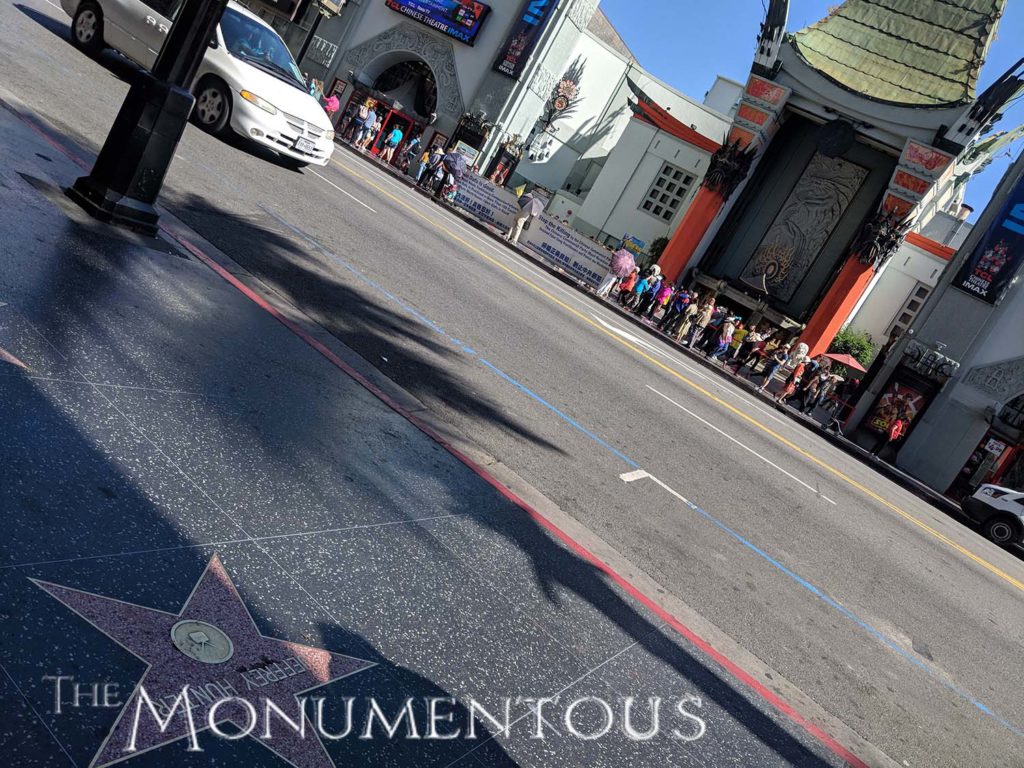 It’s possible to do anything from purchase a souvenir to look out and onto the Hollywood Sign to see a movie at Grauman’s Chinese Theatre. Interspersed with the stars are literal pieces of Hollywood history that range from the Roosevelt Hotel to the El Capitan Theatre, as well as numerous plaques that call out a variety of other pieces of history.
It’s possible to do anything from purchase a souvenir to look out and onto the Hollywood Sign to see a movie at Grauman’s Chinese Theatre. Interspersed with the stars are literal pieces of Hollywood history that range from the Roosevelt Hotel to the El Capitan Theatre, as well as numerous plaques that call out a variety of other pieces of history.
With something to see in every direction, it can be easy to forget to focus on the stars that line the street, but residents and tourists are quickly reminded of that after walking just a little bit in any direction. No matter what else is happening around the Walk of Fame, it’s impossible to ignore the names and legacies that are under your feet at every step, regardless of how many times you’ve been down the street.
These experiences are the main reason the Walk of Fame attracts more than 10 million visitors annually and help draw 26 million visitors and $14 billion a year to Los Angeles.

Helping Make Tourism the Largest Industry in Los Angeles
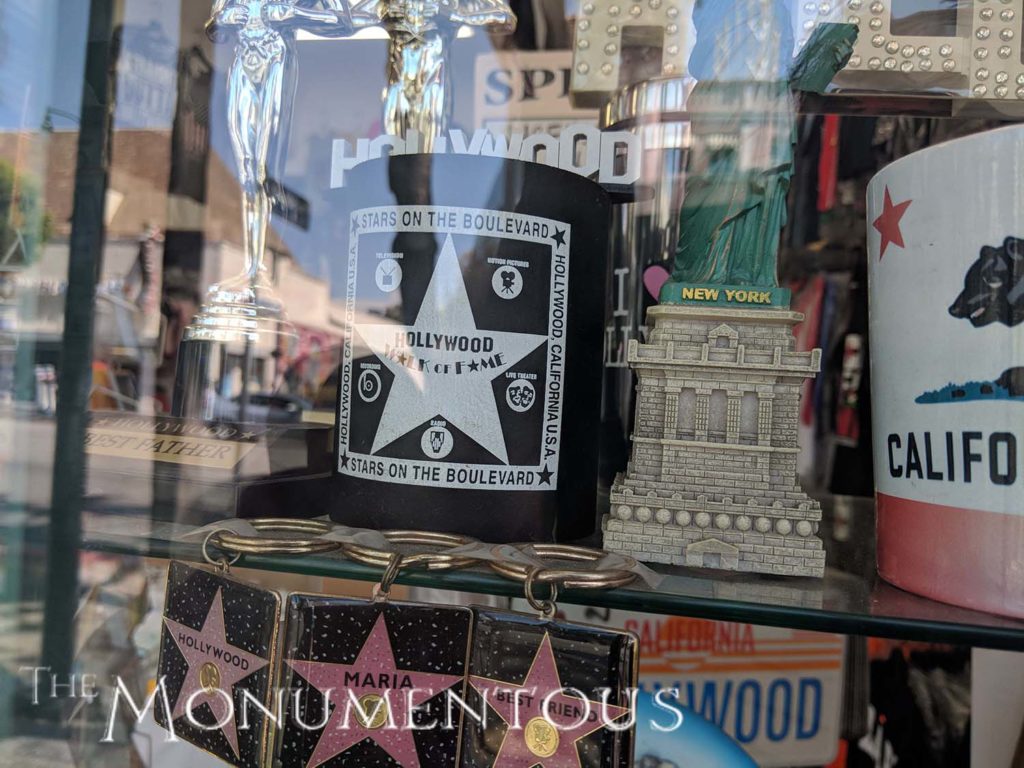 The Hollywood Walk of Fame was conceived as a means to bring visitors to Hollywood and create a positive economic impact for the area, and it has been able to do so directly and indirectly.
The Hollywood Walk of Fame was conceived as a means to bring visitors to Hollywood and create a positive economic impact for the area, and it has been able to do so directly and indirectly.
The Hollywood Chamber of Commerce charges a significant fee for the creation and installation of every new star, as well as general maintenance of the Walk of Fame. The fee is usually paid by the organization that has nominated the honoree, which may be a fan club, or a film studio, record company, broadcaster, or other sponsor involved with the prospective honoree.
Far more significant is the Walk of Fame’s role in helping make tourism the largest industry in Los Angeles. Some have mentioned that the Walk creates a “one-stop shop” for tourists, and the variety of activities and attractions on the Walk are a core element of that. Stores, tours, restaurants and plenty of other businesses line the Walk of Fame. The average out-of-town tourist who vacations in Hollywood spends about $1,500 per visit, according to a 2003 survey by NFO Plog Research.
This economic impact has directly enabled developments like the Hollywood and Highland Center, which was part of an overall effort to revitalize Hollywood Boulevard. Featuring a three-story courtyard inspired by the Babylon scene from Intolerance, the complex has utilized the foot-traffic from the Walk to become one of the most visited tourist destinations in Los Angeles. It has also helped with attracting development to other parts of Hollywood Boulevard.
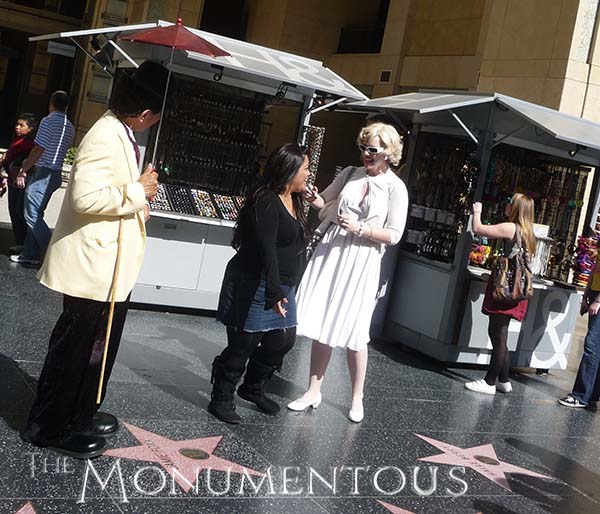 A variety of tour groups utilize the Walk of Fame as a meeting place where visitors can hop on or off of a tour, while actors and other entertainers dress in costumes to pose for photos with tourists for tips. These activities, along with the variety of personalized “Walk of Fame” items available for purchase up and down the Walk represent just a few of the economic opportunities that the Walk has indirectly enabled.
A variety of tour groups utilize the Walk of Fame as a meeting place where visitors can hop on or off of a tour, while actors and other entertainers dress in costumes to pose for photos with tourists for tips. These activities, along with the variety of personalized “Walk of Fame” items available for purchase up and down the Walk represent just a few of the economic opportunities that the Walk has indirectly enabled.
As significant as these economic benefits are to the region and community, they are often secondary to the cultural impact the Walk of Fame has opened up which are being felt and realized across the world.

Meaningfully Impacting the Culture of Los Angeles
Johnny Grant created a spectacle by staging a ceremony when his star was put in, and that display is something audiences can still take part in today when a new star is installed. These free ceremonies are a combination of celebration, pageantry and celebrity, all of which represent Hollywood as a whole to attract audiences from far and wide.

These stars and ceremonies have inspired attractions across the globe. Whether it’s Star Square in Russia, the Las Vegas Walk of Stars, the Music City Walk of Fame in Nashville or the Krakow Walk of Fame in Poland, it’s clear that the Hollywood Walk of Fame has given cities all over the world some specific ideas around what it can mean for them to create an attraction. The ceremonies and monuments associated with each vary depending on the people and culture, but the Walk has provided them with an especially powerful model that can be adjusted and customized as needed.
The strong emotions that the Walk provokes in people has also created a sense of community which is demonstrated in displays that range from the reaction of the destruction of the star for President Donald Trump to the impromptu memorials that are formed on the stars of honorees when they die. Others have undertaken informal maintenance on stars to ensure they don’t fall into disrepair. Whether out of anger, sadness or duty, communities of all types are formed and come together on the Walk.
These emotions stem from the sense of connection the Walk of Fame enables. The Walk allows visitors to feel like they’re part of Hollywood in a tangible way and physically connects them with people and concepts that would otherwise be totally intangible. These connections turn the concept of community all the way around, even if they ultimately feed back into the culture of Hollywood itself.
The impact on the culture of Los Angeles and the entire world is evident when looking at the legacy the Hollywood Walk of Fame has enabled, and it’s a legacy that continues to evolve.
A Legacy About More than Stars
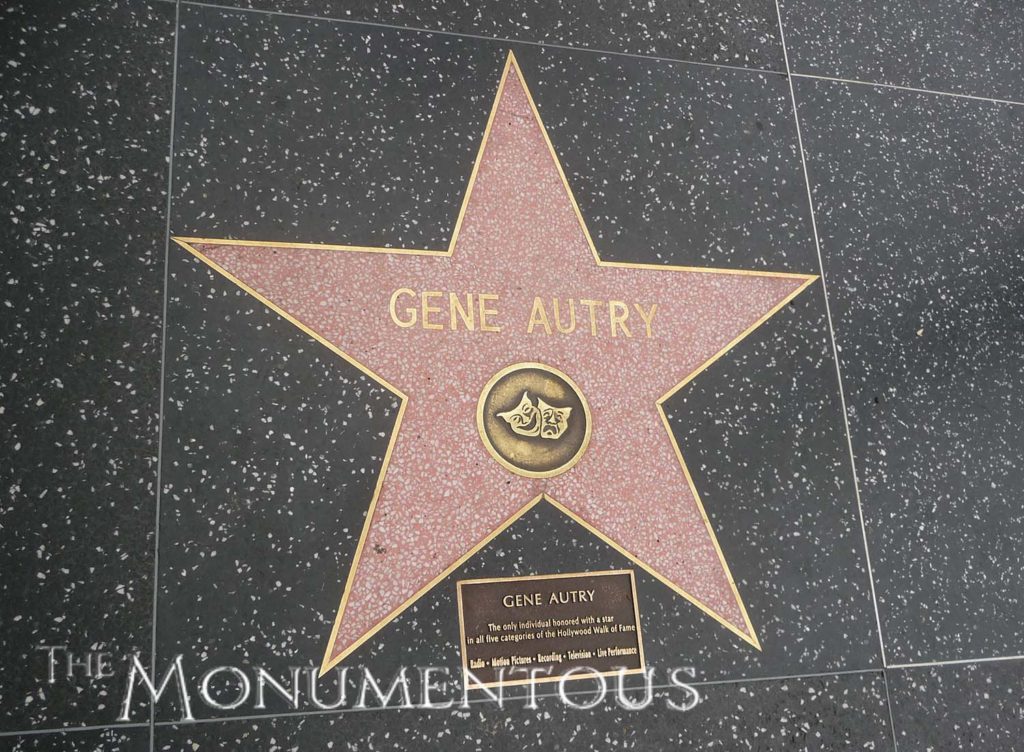 While the impact of the Hollywood Walk of Fame can be seen and felt across the world, the positive change it has enabled in Hollywood is even more evident. What would otherwise just be a street in the neighborhood is packed with visitors looking to do everything from getting a picture with a Marilyn Monroe look-alike to grab a meal to locate all five of Gene Autry’s stars. It’s the reason the Walk has become a central focus for the billion-dollar tourism industry in Los Angeles.
While the impact of the Hollywood Walk of Fame can be seen and felt across the world, the positive change it has enabled in Hollywood is even more evident. What would otherwise just be a street in the neighborhood is packed with visitors looking to do everything from getting a picture with a Marilyn Monroe look-alike to grab a meal to locate all five of Gene Autry’s stars. It’s the reason the Walk has become a central focus for the billion-dollar tourism industry in Los Angeles.
The ability to connect with people and concepts in such a personal way has created a legacy that is about far more than the five-point stars rimmed with brass that line the street. As more stars are added to the Walk of Fame on a monthly basis, the experience of walking it will draw in a whole new audience that wants to connect with certain people or concepts, only for them to find out there’s so much more for them to discover.
